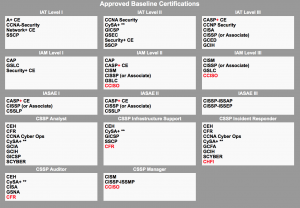Course Overview:
Certified in Risk and Information Systems Control (CRISC), is for professionals responsible for an organization's risk management program. Students looking to acquire CRISC qualify themselves as IT security analyst, security engineer architect, information assurance program manager and senior IT auditor. CRISC certified professionals manage risk, design and oversee response measures, monitor systems for risk, and ensure the organization's risk management strategies are met.
The CRISC exam will primarily align with the terminology and concepts described in The Risk IT Framework, The Risk IT Practioner Guide, and COBIT 5. This will include applications in the evaluation and monitoring of IT-based risk, as well as the design and implementation of IS controls.
The CRISC exam covers four domains that are periodically updated to reflect the changing needs of the profession:
- Domain 1: Risk Identification
- Domain 2: Risk Assessment
- Domain 3: Risk Response and Mitigation
- Domain 4: Risk and Control Monitoring and Reporting
This course is designed to assist in your exam preparation for the CRISC exam.
Attendees to TN-835: Certified in Risk and Information Systems Control (CRISC) Seminar will receive TechNow approved course materials and expert instruction.
Dates/Locations:
| Date/Time | Event |
|---|---|
|
09/30/2024 - 10/04/2024 08:30 -16:30 |
TN-835: Certified in Risk and Information Systems Control (CRISC) Preparation Seminar TechNow, Inc, San Antonio TX |
Duration: 5 Days
Course Objectives:
- Risk IT Framework—Purpose and Principles
- Essentials of Risk Governance, Evaluation, and Response
- Risk and Opportunity Management Using CobiT, Val IT and Risk IT
- The Risk IT Framework Process Model Overview
- Managing Risk in Practice—The Practitioner Guide Overview
- Overview of the Risk IT Framework Process Model
- The Risk IT Framework
Prerequisites:
A minimum of at least three (3) years of cumulative work experience performing the tasks of a CRISC professional across at least three (3) CRISC domains is required for certification. There are no substitutions or experience waivers.
Comments
Latest comments from students
User: tracycampbell
Instructor comments: Dave had great command of the class and the flow of information. The lessons seem relevant to the exam and the course material should assist greatly with passing. As a bonus, his breakdown of PKI helped with my current job requirements.
Facilities comments: The Home2Suites by Hilton was FANTASTIC!
Liked the class? Then let everyone know!
